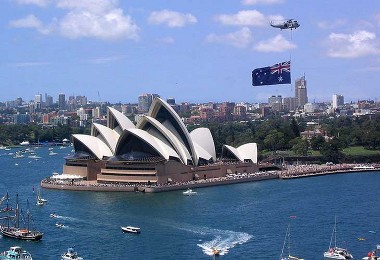Australia is a great place to move to. From its beautiful beaches and other geographical aspects, to its employment and economic opportunities to the host of benefits and social aspects that this country would provide to you and your family.
The job market in Australia at the moment is in desperate need of skills and has now actually lowered the points count after 1 July 2012 and has introduced Skills Select. Skills Select also assists the States in Australia and prospective employers with access to applicant’s points. By doing this, Australia has access to the best candidates from all over the world, to fill the vast vacancies and skills shortage that Australia is currently experiencing.
For Australia to ensure that they get the best candidates to apply, they require skilled applicants to undergo a Skills Assessment with an Assessing Authority chosen by the Australian Government. The Assessing Authority may differ in terms of the occupation.
Australia is a wealthy country with a market economy with high GDP per capita and a low rate of poverty. The Australian dollar is the currency for the nation, including Christmas Island, Cocos (Keeling) Islands, and Norfolk Island, as well as the independent Pacific Island states of Kiribati Nauru,and Tuvalu. After the 2006 merger of the Australian Stock Exchange and the Sydney Futures Exchange, the Australian Securities Exchange is now the ninth largest in the world.
Ranked third in the Index of Economic Freedom (2010), Australia is the world's thirteenth largest economy and has the fifth highest per capita GDP (nominal) at $66,984. The country was ranked second in the United Nations 2011 Human Development Index and first in Legatum’s 2008 Prosperity Index. All of Australia's major cities fare well in global comparative liveability surveys Melbourne reached first place on The Economist's 2011 World's Most Liveable Cities list, followed by Sydney, Perth, and Adelaide in sixth, eighth, and ninth place respectively.
Australia's population has quadrupled since the end of World War I. Nevertheless, its population density of 2.8 inhabitants per square kilometre remains among the lowest in the world. Much of the population increase came from immigration. Following World War II and through to 2000, almost 5.9 million of the total population settled in the country as new immigrants, meaning that nearly two out of every seven Australians were born in another country. Most immigrants are skilled, but the immigration quota includes categories for family members and refugees. By 2050, Australia's population is currently projected to reach around 42 million.
School attendance is compulsory throughout Australia. Education is the responsibility of the individual states and territories so the rules vary between states, but in general children are required to attend school from the age of about 5 up until about 16. In at least some states (eg, WA) children aged 16–17 are required to either attend school or participate in vocational training, such as an apprenticeship.
Australia has an adult literacy rate that is assumed to be 99 per cent. In the Programme for International Student Assessment, Australia regularly scores among the top five of thirty major developed countries (member countries of the Organisation for Economic Co-operation and Development). Catholic education accounts for the largest non-government sector.
Australia has 37 government-funded universities and two private universities, as well as a number of other specialist institutions that provide approved courses at the higher education level. The University of Sydney is Australia's oldest university, having been founded in 1850, followed by the University of Melbourne three years later. Other notable universities include those of the Group of Eight leading tertiary institutions, including the University of Adelaide (which boasts an association with five Nobel Laureates), the Australian National University located in the national capital of Canberra, Monash University and the University of New South Wales.
There is a state-based system of vocational training, known as TAFE, and many trades conduct apprenticeships for training new tradespeople. Approximately 58 per cent of Australians aged from 25 to 64 have vocational or tertiary qualifications, and the tertiary graduation rate of 49 per cent is the highest among OECD countries. The ratio of international to local students in tertiary education in Australia is the highest in the OECD countries.
Health care in Australia is provided by both private and government institutions. The Minister for Health and Ageing, currently Tanya Plibersek, administers national health policy, elements of which (such as the operation of hospitals) are overseen by individual states.
In Australia the current system, known as Medicare, was instituted in 1984. It coexists with a private health system. Medicare is funded partly by a 1.5% income tax levy (with exceptions for low-income earners), but mostly out of general revenue. An additional levy of 1% is imposed on high-income earners without private health insurance. As well as Medicare, there is a separate Pharmaceutical Benefits Scheme that considerably subsidises a range of prescription medications.
Australia still remains one of the most popular destinations for migration. With it many skills shortages that still need to be filled, why not contact us today and become part of this fascinating and exciting country
Contact us today for a free assessment and see if you qualify!
